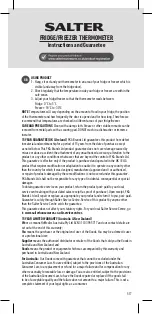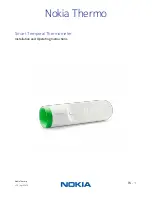
NCNA C
LA
1 2
TA/P1
67200081
p.
8
F
B0
06
80-
EN
F
A0
08
11
-E
N v.
1
- 1
1/
20
17 - © C
AM
E S
.p
.A
. - T
he c
on
te
nt
s o
f t
hi
s m
an
ua
l m
ay b
e c
ha
ng
ed
, a
t a
ny t
im
e, a
nd w
ith
ou
t n
ot
ic
e.
Electrical connections
Install the device in a place suitable
for detecting the room's tempera-
ture, possibly onto an inside wall,
and avoid any nooks, behind doors,
near curtains or heat sources.
Installing
Free type of connection.
We suggest using a BUS CAME NH-C1D cable (insulated for 750 V); alternatively, you can
use a twisted pair cable in compliance with regulatory standard CEI 46-5, and having the
following characteristics:
- 0.28 mm2 conductors' section;
- typical impedance from 90 a 120 Ω;
- capacity at 800 Hz from 60 to 130 nF/km;
- electrical resistance at 20 °C max 67 Ω/Km.
It is important to remember that when using a non-insulated, CEI 46-5-compliant, telephone
twisted pair cable, for the voltages dealt with, it must be laid in specific conduits, and must
not be used to wire 230 V AC voltages.
BUS line connection
Digital input to which it is
possible to connect a button or
remote sensor.
The module must be connected
to the home-automation bus via
a non-screened, non-polarized,
double, twisted cable.
G
A
















































